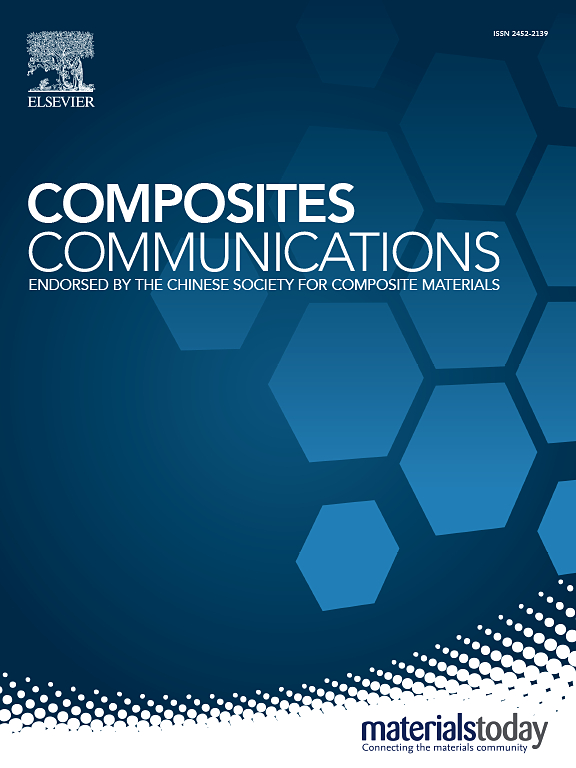A high impact resistant coupling bionic asymmetric sandwich panel inspired by red-eared turtle shell and coelacanth fish
IF 6.5
2区 材料科学
Q1 MATERIALS SCIENCE, COMPOSITES
引用次数: 0
Abstract
Composite sandwich panel (CSP) is gradually being used in satellite reflector antennas due to their high special strength and stiffness. However, enhancing the impact resistance and energy absorption capability of CSP remains a signifiant challenge. Herein, inspired by the double-helical structure of coelacanth fish and the asymmetric shell of Red-eared turtle, bio-coupling asymmetric CSP was designed. Moreover, the low-velocity impact tests on CSPs of different structures were simulated using finite element analysis, the finite simulation revealed that the double-helical configuration deflected crack and lengthened crack path, while the thicker impact panel provided a larger buffer area to absorb more energy, which further enhanced impact resistance. Furthermore, these simulations were validated by experiments. The experimental results indicated that the bio-coupling asymmetric CSP exhibited the highest peak load and energy absorption (6629.26 N, 60.94 J), this represented a significant increase of 35.25 % and 17.37 %, 18.81 % and 14.53 %, 10.95 % and 4.35 % compared to cross-ply CSP, single-helical CSP and double-helical CSP, respectively. This work provides valuable insights into the effective structural design of satellite antenna reflectors, with potential applications in aerospace engineering.
求助全文
约1分钟内获得全文
求助全文
来源期刊

Composites Communications
Materials Science-Ceramics and Composites
CiteScore
12.10
自引率
10.00%
发文量
340
审稿时长
36 days
期刊介绍:
Composites Communications (Compos. Commun.) is a peer-reviewed journal publishing short communications and letters on the latest advances in composites science and technology. With a rapid review and publication process, its goal is to disseminate new knowledge promptly within the composites community. The journal welcomes manuscripts presenting creative concepts and new findings in design, state-of-the-art approaches in processing, synthesis, characterization, and mechanics modeling. In addition to traditional fiber-/particulate-reinforced engineering composites, it encourages submissions on composites with exceptional physical, mechanical, and fracture properties, as well as those with unique functions and significant application potential. This includes biomimetic and bio-inspired composites for biomedical applications, functional nano-composites for thermal management and energy applications, and composites designed for extreme service environments.
 求助内容:
求助内容: 应助结果提醒方式:
应助结果提醒方式:


